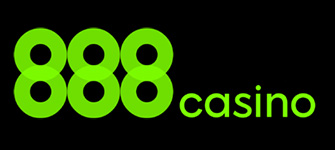French Roulette
Introduction
French roulette is considered the birth-giver of all other styles of roulette. It doesn’t differ very much from what we know about European and American roulette – only the design differs. The world “roulette” actually comes from French and it translates literally into “little wheel”. Instances of the game are recorded to have been played as far back as 1796 A.D in Paris, France. Not much has changed during the past 200 years – the tables got bigger and the roulette wheels shinier, but the same basic rules still apply to this day.
The Croupier
In French Roulette, there is no dealer. You, and everyone else, must address the roulette attendant by his proper title – croupier. You must watch your croupier carefully, for he will be taking your bets; informing you when you have won/lost and generally be with you throughout the course of the game. Look at his gestures and movements carefully, especially if you are one of those compulsive types who like to place bets at the very last minute. The croupier will give you a few seconds after he had spun the wheel. Once they raise their hand, this means “no more bets”.
The Chips
Each player is given chips, corresponding to a given colour. The croupier is the only person who should know who has which chips. This way no two parties would argue over who made which bet. At the end of each spin, the croupier will announce the winning number and collect the rest using his special spade. Additional purchasing of chips is not only allowed, but encouraged as well.
The French Roulette Wheel and Layout
Before we dive deeper into the game, we will take a look at the thing that makes it all possible. The wheel used in French Roulette is the single-zero version. It is practically identical to the one featured in European Roulette. Specifically, the wheel comes with 37 pockets. They alternate in red and black colour, with the exception of the zero pocket, which comes in green. The sequence of numbers presented on the wheel is the following:
0-32-15-19-4-21-2-25-17-34-6-27-13-36-11-30-8-23-10-5-24-16-33-1-20-14-31-9-22-18-29-7-28-12-35-3-26
As for the betting layout, this is where you place your bets. The French layout is more stylized for a French player base and some of the outside bets are presented with their French names. Aside from that, the layout is in line with those of other roulette games. There are three columns and twelve rows of numbers, with the zero on top of them.
Betting Options in French Roulette
When it comes to betting options, roulette gives you more ways to stake your money than just about any other game out there. Each wager is different and deals with a specific aspect of the wheel. In order to have success in this game, one has to properly understand how the bets work. Below, we will outline all possible bets in French Roulette and what their respective payouts are.
Inside Bets
The inside bets are found within the numbers grid on the layouts. They all involved specific numbers and these types of bets vary in risk and reward. Each inside bet is different and comes with its own specific success chance and payout. Below, we will list all inside bets that you can place in French Roulette.
- Straight-up Bet – A wager placed on a single number. Pays 35:1
- Split Bet – A wager placed on two neighbouring numbers at once. Pays 17:1
- Street Bet – A wager placed on three numbers in a row. Pays 11:1
- Corner – A wager placed on four neighbouring numbers. Pays 8:1
- Six Line Bet – A wager placed on two rows of numbers at the same time. Pays 6:1
- Trio – A wager that involves the zero and two other neighbouring numbers. Pays 11:1
You can put down as many inside bets at the same time as you wish or as much as your bankroll and the betting limits will allow.
Outside Bets
The outside bets refer to a group of wagers found directly next to the numbers grid. Since they are not located inside it, they are called outside bets. This group of wagers focuses on certain aspects of the winning number rather than its specificity. Moreover, since the bets are not as specific, they come with lower risk. Naturally, this translates over into lower rewards. There are several primary outside bets in French Roulette and below, we will list all of them.
- Dozen Bet – a bet on a group of 12 numbers. There are 3 dozen bet options and they cover the numbers 1-12, 13-24, and 25-36. Pays 2:1
- Column Bet – a bet on one of three columns in the grid. Pays 2:1.
- Low or High (Manque ou Passe) – A bet on whether the winning number will be in the 1-18 or 19-36 range. Pays 1:1
- Red or Black (Rouge ou Noir) – A bet on whether the winning number will be red or black. Pays 1:1
- Even or Odd (Pair ou Impair) – A bet on whether the winning number will be odd or even. Pays 1:1
Call Bets in French Roulette
The call bets in roulette are special in that they are not found on the layout, generally speaking. Moreover, at land-based casinos, you do not put down the call bets yourself. This is done by the croupier. You simply call out what special bet you want and the casino staff will get on it, hence the name ‘call bets’.
There are several call bets that you can place in French Roulette and they all vary substantially. What’s more, the call bets are not stand-alone wagers as the ones described above. Instead, they are a collection of several smaller bets, which all form one major pattern. Therefore, to place any call bet, you need to put more money upfront. Not only that but for a call bet to be effective, all of the chips used to place it will need to be of the same denomination. There is quite a lot of specificity as far as call bets are concerned and below, we will shine some light on what they involve.
Voisins du zero – also called the neighbours of zero, in English, is one of the most common call bets out there. It covers 17 numbers, the zero and the eight pockets on either side. To make this bet, you would need to place 2 chips on the 0-2-3 trio, 1 chip on the 4-7 split, 1 chip on the 12-15 split, 1 chip on the 18-21 split, 1 chip on the 19-22 split, 2 chips on the 25-26-28-29 corner, and 1 chip on the 32-35 split. That’s nine chips of equal value, in total.
The Jeu zero, which means zero game in English, is a more conservative version of the Voisins. It covers the zero and six other numbers. To put down this wager, you would need 1 chip on the 26, 1 chip on the 0-3 split, 1 chip on the 12-15 split, and 1 chip on the 32-35 split. All in all, four chips are required.
Le tiers du cylindre is another interesting and intricate bet option. It covers a third of the wheel, more or less, and involves six different split bets. For le tiers, you need one chip on the 5-8, 10-11, 13-16, 23-24, 27-30, and 33-36 splits. Of course, you could go for different numbers, there is no specific requirement on which third of the wheel you actually have to cover.
Orphelins is a call beet that includes the numbers not included in the Voisins and Tiers wagers we mentioned above. Eight numbers are involved in the Orphelins and you would need to place the following wagers: 1 chip on the 1, 1 chip on the 6-9 split, 1 chip on the 14-17 split, 1 chip on the 17-20 split, and 1 chip on the 31-34 split. That’s five chips in total.
House Edge and RTP in French Roulette
Gambling is a risky business, all things considered. We all go in, knowing that we might leave without a penny in our pocket. Still, it seems to be a deal risker for players than it is for the house. Why is that?
The saying ‘The house always wins’ is not exactly true but it is not false either. Casinos make a great deal of money and there is only one way to guarantee long-term success where chance is involved. To do so, you need to turn the odds in your favour. That is what the casinos do when designing their games and this is what we call the house edge.
The house edge is the statistical disadvantage that you have when playing against the casino. It comes from the discrepancy between the odds at winning a bet and the payout odds. The way it works is quite simple, yet it is not obvious at first.
Take for instance the straight-up bet. You are betting on a single number out of 37 in total. This means that your one number goes against 36 others. Therefore, the odds against winning are 36:1. However, the payout odds are 35:1. This discrepancy is what constitutes the house edge. Over the long term, you will lose money by taking this bet or any other in roulette for that matter.
The house edge is evaluated in percentages. For French Roulette, the house edge on inside bets is 2.7%. This means that the theoretical return for a $1.00 bet is $0.97. However, we have to mention that the house edge is theoretical and these figures apply only when playing infinite spins with infinite money. In the short term, there is no saying what might happen. This means that you can have success playing French Roulette. What you also need to consider is that the more you play, the more the house edge comes into effect. Therefore, our advice is if you earn a decent payout, quit while you’re ahead.
On the topic of the house edge, there are some peculiarities regarding the outside bets of French Roulette. We will discuss this directly in the next point.
Special French Roulette Rules
French Roulette may share many features with the European version and even the American one, for that matter. However, it is only in French Roulette that you find the most player-friendly rules in the whole genre. We all know the horror of placing an outside bet only for the ball to land in the zero pocket. As it happens, there is a remedy for that and it comes in the form of the ‘en prison’ and ‘la partage’. Below, we will take a look at both of them and see how they function and what effect they have on the game.
En Prison
The ‘en prison’ rule applies when you have placed an outside bet and the ball lands in the zero pocket. Under standard European or American rules, you would lose your wager. However, in French Roulette, your bet will remain in place for one more spin. If your outside bet wins this time, you get to take back your wager. You do not win anything, but you don’t lose either.
Take note that en prison is mutually-exclusive with la partage.
La Partage
The ‘la partage’ rule, on the other hand, does things a little differently. Once again, it applies when you have made an outside bet. If the ball lands in the zero pocket, you do not lose your money. Rather, the casino will return half of your bet and keep the other half.
The la partage is different from the en prison in that it removes the additional risk. Rather than take an extra chance, you just receive half of it back. Generally, both rules have the same statistical outcome but the la partage is the more stable of the two.
Effect on the House Edge and RTP
Since these rules change the flow of money turnover they also have an effect on the RTP and house edge values. The result is they reduce the house edge on outside bets by half. Therefore, from the standard 2.7%, the casino advantage is lowered to 1.35%. This makes French Roulette the most favourable of all roulette variations out there.
The way it works is quite clear. In la partage, you get half of your money back outright. With en prison, statistically, you win 50% of the respins and get 50% of the lost cash. In both cases, your losses from the zero pocket are reduced by half.
Of course, we also have to consider whether one rule is more favourable than the other. Judging by the statistics alone, the answer would be no. However, the statistics are only true in the long run. Therefore, if you are lucky enough to beat the odds in the short term, en prison will be more favourable for you. La partage, on the other hand, takes the risk out of the equation and just gives you back half of your losses. It all depends on your play style. If you want a more stable and consistent bankroll, choose a la partage game. If the thrill and excitement of the game are more to your liking, then en prison is right for you.


 PlayOJO Casino
PlayOJO Casino 888casino
888casino All British Casino
All British Casino Casino Action
Casino Action UK Casino Club
UK Casino Club